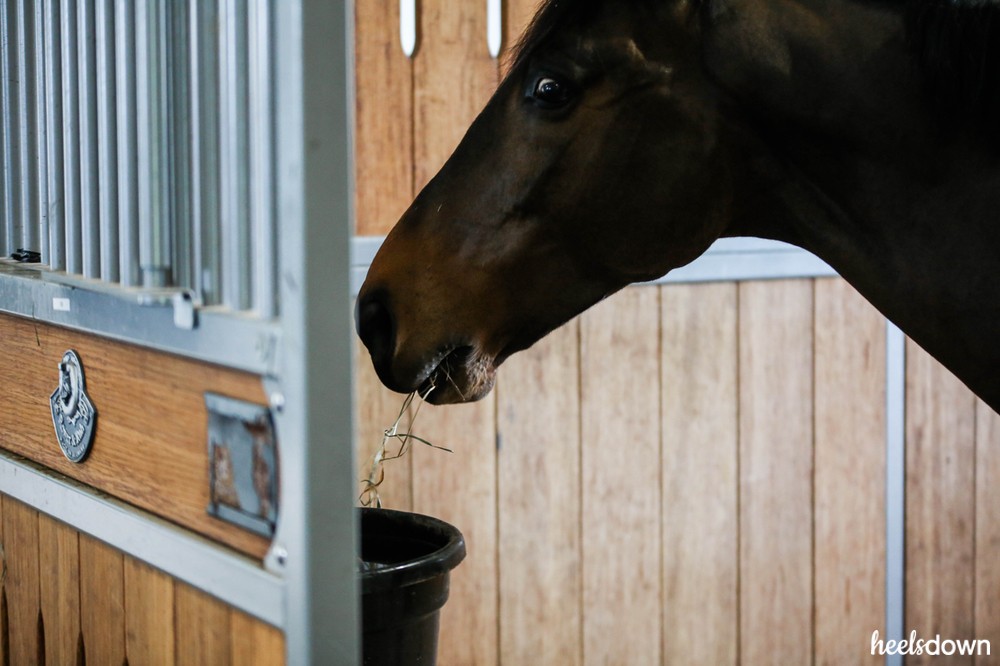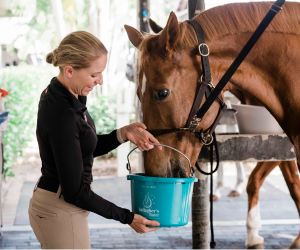Could My Horse’s Diet Be Hurting Him?

Your horse is itchy, full of hives and bludgeoning himself on his stall from excessive scratching. You’ve ruled out bug bites, pollen sensitivity and other common triggers. What, then, could be the cause? It might be time to look at his feed — he could be allergic to something he’s eating.
The more common ingredients known to cause allergic reactions and sensitivities in some horses include alfalfa, wheat, corn, and soy. Less common foods that could trigger a reaction include lucerne, barley, beet pulp, bran, buckwheat, molasses, chicory, clover, malt, oats, potatoes, and St. John’s Wort.
But, don’t immediately jump to food allergies if you haven’t exhausted other possibilities. True feed allergies in horses are rare. “Unlike humans, horses are not very commonly allergic to feedstuffs,” says Dr. Fernanda Camargo, an associate professor and equine extension specialist at the University of Kentucky. “This is one way that herbivores survive: Their metabolism allows them to browse a lot of different forages and brushes without causing them harm.”
The potentially frustrating issue is that the main feed allergy symptoms of hives and itchiness are also shared with environmental allergies, which are the much more likely cause. “It’s typically inappropriate for owners to change diets when they should actually be more focused on changing the environment,” says Dr. Laura Petroski, a veterinarian with Kentucky Equine Research. “However, it has been well-documented in humans, cats, and dogs that these species experience a combination of allergies (insects, food, drugs, and environment). Perhaps in horses being fed more commercial diets, we may start to recognize a similar trend.”
Read this next: Why Is Strangles So Contagious in Horses?
Identifying Symptoms and Causes:
After ruling out other possibilities, figuring out what’s causing the feed allergy is key. While skin testing — where a horse’s skin is injected with different potential irritants to look for reactions — is available, it’s not always helpful in pinpointing food allergies. Instead, a feed elimination diet is typically the first step. “For at least four to six weeks, feed ‘novel’ food sources like timothy hay, rolled oats, alfalfa, or barley,” suggests Dr. Petroski. “It is most beneficial to feed horses food sources which they have never been exposed to before, in an attempt to avoid an allergic response.”
During the elimination diet, stop using any non-essential supplements, vitamins, and drugs. After the four to six weeks are up, add one item back into the diet each week.
Owners also don’t realize they may carry allergens on their hands if handling feed or other substances for different horses.
It’s important to closely monitor the horse when adding back in items, says Dr. Petroski. “If the horse is allergic to any of the food items that are reintroduced, you will see clinical signs within 24 to 72 hours.”
Creating a Diet Plan:
If your horse is found to be allergic to a certain food, simply eliminating that item from his diet is not your one-and-done step. The next step is working with an equine nutritionist to create a new diet plan. It’s important to nutritionally replace the missing item to make sure your horse is getting what he needs, and you also don’t want to replace it with a feed that contains hidden ingredients, which can cause additional reactions.
Adding some supplements with fatty acids can be beneficial, as they have been known to help reduce inflammation and itchiness caused by allergies (one such product is Kentucky Equine Research’s EO-3 product, which you can find at SmartPak).
After that, it’s all about management. If you suspect any item or area has been exposed to the food in question, sanitize it thoroughly to avoid accidental exposure. “Owners also don’t realize they may carry allergens on their hands if handling feed or other substances for different horses,” explains Dr. Petroski. “If handling the feed of a food-allergic horse, one should wash their hands and wear latex gloves before handling that horse’s food to avoid cross contamination.”
Like this article? Try: No Hoof, No Horse
If your barn’s set-up is just not conducive to limiting exposure, try moving the horse to a different stall or barn, or even just out to pasture where exposure will be minimal. But, don’t panic. Severe reactions to feed allergies — where injected steroids or other serious drugs are needed — are not likely to occur, says Dr. Petroski.
“Luckily, these types of reactions aren’t typical, and oral steroids are the most useful product to have on hand if a horse develops hives or itchiness from food or environmental allergens. This medication can help alleviate some of the clinical signs associated with allergies.”


